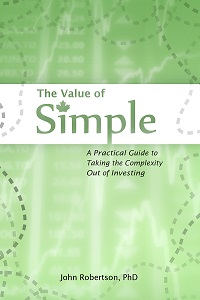Home Improvements
November 21st, 2010 by PotatoI get a annoyed when people imply (or explicitly state) that a rental house cannot truly be a home. One reason seems to be the idea that since it’s “not yours” you can’t take any pride in how your place looks, and will not do anything to it, and will be at the mercy of your landlord.
Of course, Wayfare and I don’t buy into this at all. For making our place a home, we can paint as we wish (though our current and previous place had such good paint jobs with tasteful colours that we didn’t want to, though we did paint the institutional white of our apartment). For larger improvements it’s not that we can’t make them, it’s that we can’t make them without the landlord’s permission. We’ve found that landlords have been quite open to letting us work on improving the property, and in some cases have even been willing to share costs — after all, most things that make the place a nicer home for us also make it more attractive to future tenants. Some things are kind of halfway between a repair and an upgrade, and they’d be responsible for repairs anyway.
The biggest thing so far has been the installation of a dishwasher in the kitchen of our new place. There, we paid for the dishwasher itself (though our landlord sourced it through some discount supplier he knows), and our landlord covered the labour to remove the shelving, and the plumbing/installation. We didn’t mind paying $400 to get the use of a dishwasher for a few years, and then the landlord will have a dishwasher at a discount that can make the property more attractive for the next tenants. Win-win.
And of course, that idea of win-win is important with these sorts of negotiations: you have to make it worthwhile for the landlord as well as yourself, that’s the reality of the situation. But that’s not really a high hurdle to hit. Another big improvement to our current house was the installation of central air conditioning: we didn’t even (explicitly) pay anything towards that, we just had to point out that it was one of the only houses we were looking at that didn’t have central air, and the landlord agreed that it was becoming a standard feature. He agreed to install central air if we took the place a few weeks earlier than we were originally trying to negotiate for.
We’ve also made numerous smaller improvements on our own to this pre-war bungalow. We planned on being here for a few years at least, and understand that most small renovations do not provide any return at all, at best a recovery of some of the expense, even in an owned house. For the most part, you spend money on renos because that money spent on improvements makes the house a nicer place to live while you’re there, which brings you joy. It’s a cost of living. People shouldn’t look at them as something they want to get paid back on, and that to avoid spending any money on a house just because it’s owned by someone else is a way of thinking that doesn’t resonate with me.
Fortunately, Wayfare happened to be creating a list of all the stuff we’ve done just to keep our landlord in the loop, so it’s easy for me to cut-and-paste for you what improvements we’ve made to our home:
- Added a door to the bathroom cupboard [The bathroom has a nook with shelves for linens and other storage, but it was just open to the bathroom. We put in an accordian door to turn it into more of a closet.]
- Rehung the door to the middle bedroom [This was a repair rather than an upgrade — the door wouldn’t close properly because it was hung at an angle. Just had to take out the hinge and screw it back in properly/level.]
- Added a door handle to the door to the basement [The door down to the basement just had a hole from where the knob had been removed — here’s where our landlord gets a negative mark, as in my opinion that should have been fixed before we moved in, but he figured it also had a hook/latch to keep it closed, so it still functioned. We put an actual doorknob on it.]
- Put a peephole into the front door [Self-explanatory. For security reasons.]
- Installed a screen door closer and spring on the front door
- Took down the broken mailbox and replaced it [Technically, the old mailbox still functioned at its primary objective of holding mail, but failed at its secondary objective of keeping said mail dry.]
- Replaced the vent cover in the kitchen [Largely cosmetic: the kitchen has a chess-board inspired white and black tile floor, yet had a light brown vent cover. We got a black one to match. Plus the old one was filthy.]
- Added a oak hand railing to the basement [This one I think should have been done long ago, I don’t know how they had a staircase with no railing. We put one in.]
- Added a new baseboard and quarter round around the landing to the basement to plug up some cracks [Largely cosmetic, but with all the following cosmetic improvements to the basement it went from looking really unfinished and ancient and utilitarian to being a rather nice semi-finished laundry room and storage space.]
- Removed all of the plastic clothes dryer venting and installed new metal piping. The dryer now vents outside rather than in-between the walls. [Yeaaaaah… I’m pretty sure that vent do-hicky was supposed to go outside, and not into the void between the inner and outer wall.]
- Cleaned out under the basement stairs and threw out the paint that had turned solid as well as all the broken glass. All of the current paint is now stored there along with the drawers that were taken out of the kitchen when the dishwasher was installed.
- Installed doors to the area under the stairs to keep it out of sight. [The space under the stairs was just a mess. It’s both cleaned up and out of sight now, with a nice white-painted plywood triangle covering things up. Looks downright finished now.]
- Removed the broken blinds in the front bedroom and replaced them with a roller blind. [The blinds were left behind by the last tenant anyway.]
- Fixed the stove so that the plug on top now works [The actual problem turned out to be simple to fix, but I didn’t discover that until after I had taken the stove halfway apart.]
- Scraped the cement off of the interior basement wall near the laundry area.[Again, just making it look more finished.]
- Replaced the rotting shelves in the basement with melamine shelving
- Replaced the plywood shelves in the bathroom cupboard with melamine shelving [Yep, don’t know who would have put their towels that they’d put on their clean naked body on those shelves. Ugh.]
- Cleaned up the caulking and grout in the upstairs bathroom and added white quarter-round around the side of the counter where it meets the wall
- Fixed the missing wallboard in the middle cupboard space in the basement [There was just a weird hole in the wall in the basement. We figured that the first time the cat got into the basement, she’d go straight for that and get covered in filth and insulation. It had to get covered up.]
- Replaced the shower head [Water-saving, and it now has a hose/wand!]
I think some other items she forgot include rehanging the fridge/freezer doors so they open the right way around, and also levelling the fridge, updating some of the smoke detectors that appeared to be over 10 years old (and putting in a photoelectric type near the kitchen/bathroom), and the biggest one, actually getting damned electrical service into the garage, with a lightbulb! (It looks like there was a light bulb and electrical in the garage at some point in the past, which had then been torn out… fortunately for us, there was still a hole into the house for the conduit, which I guess is a kill-two-birds-with-one stone solution, as we also plugged that hole in the foundation between the house and the garage :) One that I think may help our health was covering up the hot water pipes with foam pipe insulation. The pipes were wrapped with “some kind” of insulation — it appeared to be old cloths, and they had basically fused to the pipes. We had to wrap the foam over whatever-it-was to seal it in, rather than mess with trying to remove the old stuff from the pipes. That alone made a huge difference to the appearance of the basement, as those ratty cloths hanging from the unfinished ceiling were downright creepy. Who knows what may have been growing in that browned fabric. Oh, and I rewired the phone and cable lines. Much better reception now :)
So you can see that it’s not very hard to make your space your own, even if you rent. You just have to work things out with your landlord. Most small improvements that people would want to make are quite easy to negotiate — indeed, your landlord may be thrilled that you’re helping to make the place better, and may share costs with you. Granted, more major renovations, such as redoing a kitchen or putting an extension on a house are probably nonstarters, but that’s not a big loss as you have the freedom to move as a tenant to find a place that suits you for a medium-term time period. You probably aren’t in the situation where you’ve got a starter home that’s just too small for you after a few years, and find it may be easier to renovate than move. That said, commercial tenants with aims to stay in one spot for a decade or so very often do work out renovation plans for their space, and it’s not like it’s illegal for a residential tenant to do the same: it’s just rare and tricky. But I suppose if you absolutely had to have granite countertops and were willing to pay for them anyway, then the only thing stopping you is your own negotiation skills.


 Questrade: use QPass 356624159378948
Questrade: use QPass 356624159378948 Passiv is a tool that can connect to your Questrade account and make it easier to track and rebalance your portfolio, including the ability to make one-click trades.
Passiv is a tool that can connect to your Questrade account and make it easier to track and rebalance your portfolio, including the ability to make one-click trades.